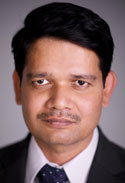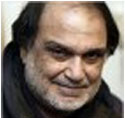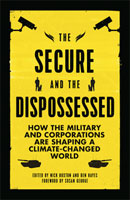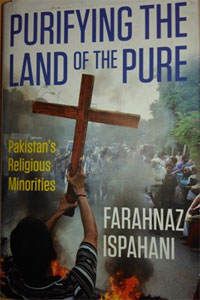Shades Of Hindutva– Examining Challenges From Within And Without

By Tufail Ahmad, New Age Islam
28 Jan 2016
Hindutva, a stock of knowledge and way of life unique to Indian civilisation, is being viewed differently and is facing challenges from within and without. On January 21, M. Venkaiah Naidu, India's Minister for Parliamentary Affairs, tweeted: "Feeling immensely motivated by seeing the great Hindu monk of India, Swami Vivekananda, who has taken…[the] message of Hindutva across the globe."1 Naidu made the comment after visiting the Vivekananda Rock Memorial in Kanyakumari. In this sense, Hindutva is seen as a universal way of life, and was presented in this meaning by Swami Vivekananda at the Chicago Parliament of the World's Religions in September, 1893. In Chicago, Vivekananda had stated: "We believe not only in universal toleration, but we accept all religions as true."2
On January 25, Ramachandra Guha, a noted Indian historian who describes himself as a "lapsed Marxist", tweeted: "I admire aspects of Hinduism and am a Hindu too… I am opposed to Hindutva and Hindu bigotry."3 Guha's tweet got a rejoinder the same day from Sudhanshu S. Singh who works in the humanitarian sector: "There are no clear-cut definitions of Hinduism and Hindutva. Often people abuse Hinduism in the name of Hindutva."4 In short, Hindutva – as a way of life, as a corpus of cultural practices, as a civilisation and as a religion and spirituality – has acquired a set of contentious meanings in Indian society.
The English word "Hinduism" does not reflect it completely due to its association with "ism" which denotes "ideology."The word "Hindutva" too is not a complete translation of "Hinduism" insofar as it conveys a sense of ideology. For example, the Bharatiya Janata Party (BJP) website views Hindutva as an ideological movement, stating: "This movement, Hindutva, is changing the very foundations of Bharat and Hindu society the world over."5 It is immaterial what Hindutva means at the theoretical level. It is consequential how it is being viewed at the normative level. Therefore, various shades of Hindutva emerge at the popular level and are discussed below.
i) Hindutva – A Universal Way of Life: The term "Hindutva" has come to be associated with the Rashtriya Swayamsevak Sangh (RSS, or the National Volunteer Organisation). The RSS views Hindutva in terms in which Swami Vivekananda spoke of – as a universal way of life. It views the entire corpus of knowledge and practices unique to India as Hindutva. The RSS sees itself as representing and defending the way of life that has been India's heritage from the ancient times. In other words, the RSS is the custodian of Hindutva. The RSS doesn't have an agenda of its own, but the diverse cultures of India are on its agenda.
While the RSS's understanding of Hindutva is universal in its meaning, the organisation itself has come to be viewed as a sectarian organisation, mainly because the non-Indian streams of thought such as those represented by Muslims and Christians feel threatened. Also, it is problematic that a single organisation should represent the entire diversities of a vast civilisation known as India, or Bharat. Nevertheless, the RSS's view of Hindutva does capture the vast diversities of India. As a result, a host of Hindu organisations are linked with the RSS by its antagonistic critics, whether or not they are organisationally connected to the RSS.
ii) Hindutva – A Secular Way of Life: A second meaning associated with the first definition views Hindutva as a secular way of life. In this sense, it is difficult to separate Hindu cultural practices from their religious conceptions. For Hindus, religion means spirituality, not an organised religion. However, this conception of spirituality cannot be separated from nature. For example, Hindus worship trees, rivers, snakes, cows and all life forms. In a historical sense – a sense in which history represents empirical practices – Hindutva is seen in a paradigm in which culture, spirituality and nature cannot be separated. Since history is secular, Hindutva is therefore secular.
In a recent article, eminent lawyer Ram Jethmalani quoted a 1995 Supreme Court judgement on Hindutva, which states: "Ordinarily, Hindutva is understood as a way of life or a state of mind and is not to be equated with or understood as religious Hindu fundamentalism... it is a fallacy... that the use of words Hindutva or Hinduism per se depicts an attitude hostile to all persons practising any religion other than the Hindu religion..."6 "Throughout India's ancient history, the word Hindu was never meant to denote religion," Jethmalani noted, adding that "Hindu" is the outsiders' term and the British gave a religious meaning to it.7 "Then came the first census of India by the British in 1871 that defined 'Hindu' as an omnibus term to encompass several religions that were not Muslim, Christian, Buddhist, or Jain," explained.8
iii) Hindutva – As Religious Fundamentalism: Most Hindu groups tend to agree over the two conceptions in which Hindutva is vastly diverse –as a universal way of life and as a secular way of life. However, at the empirical level, we are also witnessing groups of Indians who claim that they are Hindus and defy the above two definitions of tolerance and diversity. For example, bands of Hindu youths enter parks and shopping malls to dissuade youths from celebrating the Valentine's Day. Some Hindu groups that are at the forefront of such a fundamentalist movement are: Hindu Mahasabha, Bajrang Dal, Shiv Sena, the Vishwa Hindu Parishad, and others.9 These groups cannot be painted in terms of purely "religious" fundamentalism; their viewpoint is slightly larger and includes both religion and culture.
However, they have also reduced universal spiritualism of Hindutva to a religion. These Hindu organisations have developed a sense of insecurity, which originates from the fact that India has been invaded and ruled by outsiders for centuries but Indians have themselves never gone abroad to attack any other way of life. Dr. APJ Abdul Kalam, the architect of India's missile programme and late president, was precise: "In 3000 years of our history, people from all over the world have come and invaded us, captured our lands, conquered our minds. From Alexander onwards. The Greeks, the Portuguese, the British, the French, the Dutch, all of them came and looted us, took over what was ours. Yet we have not done this to any other nation. We have not conquered anyone."10 The concern of these Hindu groups is valid, but they also do depart from the original conception of Hindutva.
iv) Hindutva – A Type of Jihadism: In recent years, some Hindu groups havedisplayed a militant opposition on some issues. On January 24, 2009, members of a Hindu group – known as Sri Ram Sena and headed by P. Muthalik – attacked women at a pub in Mangalore for violating Indian values, and over a dozen members of the group were arrested.11 Muthalik justified the attack: "In that pub, women were indulging in obscenity, they were taking drugs"; "Even if our sisters had done this, we would have acted like this only."12 Also, a series of terror attacks that took place in India do not appear to have been carried out by Muslims, though the attackers sought to blame Muslims. Abhinav Bharat, a Hindu group inspired by the conception of Hindu Rashtra (Hindu nation), has been linked to such attacks, as discussed by this writer elsewhere. 13
For such groups, Hindutva represents a form of armed doctrine, much like jihadism is for the Islamist groups worldwide. For example, Shiv Sena, a coalition partner with the Bharatiya Janata Party of Prime Minister Narendra Modi in Maharashtra state and the federal Indian government, has gone on to advocate the use of suicide bombers to save the Indian civilisation. On June 18, 2008, an editorial in Saamna, a Shiv Senanewspaper, warned: "Islamic terrorism is increasing in Hindustan [India] and to confront this Islamic terrorism, Hindu terrorism of equal strength has to be evolved. Like the Islamic extremists, unless there are Hindu suicide bombers to protect the nation..."14 On August 15, 2015, the Shiv Sena reiterated this position in an editorial: "Hindus should be able to live in this country with pride and his (a Hindu's) voice should roar like that of a lion. If an answer has to be given to Pakistan extremists, Hindus will also have to become highly religious. To answer Pakistan, Hindus need to become human bombs and invade their country." 15
v) Hindutva – A Dynamic Way of Life: Hindutva is immensely diverse: Hindus worship rivers, trees, snake, men, women, sun, and practically everything. There is a temple in Delhi dedicated to the Saturn. But at the center of it, Hindutva is a dynamic force, open to accept change. For example, a temple was built in Bihar state in the name of cricketer Sachin Tendulkar.16 Similarly, fans of Bollywood actor Amitabh Bachchan built a temple in his name in Kolkata.17 Hindu masses, led by reformers like Raja Ram Mohun Roy, have also abandoned one of their sacred books Manusmriti, particularly with respect to its advocacy of caste system. There are indications that this truly Indian way of life is about to accept transgenders very soon legally.
Dr. David Frawley, an American Indologist, noted recently: "Hinduism… easily blends in with pluralistic social traditions, such as found in democratic traditions today."18 The acceptance of democracy in India by Hindu masses is unique – not seen for example in the Islamic world. This has led to the empowerment of a large number of masses. Millions of lower caste Indians are enabled as equal citizens due to Hindutva's willingness to change and acceptance of democracy. This acceptance results because Hindutva is a way of life willing to accommodate change; it is not merely a religion. It is due to this acceptance that millions of women are being empowered through the Panchayati Raj system. The rise of women in India's public space could be the biggest tribute to Hindutva's acceptance of democracy in coming decades.
Conclusion
Both peaceful and non-peaceful Hindu groups view their allegiance to Hindutva as the common stock of knowledge and way of life – i.e. as a system of ideas and practices in which culture, spirituality and nature cannot be seen separately. From the above discussion, it is clear that sections of people view Hindutva differently. As a way of life some groups are seeking to defend it militantly and therefore are disliked by those whose viewpoints are thus opposed. Some Hindu groups think that Hindutva is threatened by a combination of three forces: Christians, Muslims and liberal Hindus.
In coming years, some form of militant Hindutva is bound to be active because as the movements of ideas known as Islam and Christianity are succeeding in a manner that undermines the way of life known as Hindutva. For example, it is being seen that in case of inter-religious marriages, it is mostly Hindu girls who convert to Islam in order to marry – a phenomenon now known as Love Jihad. Hindus are generally open to marrying across religions without converting, a proposition unacceptable to Muslims. It is also being seen that in districts where Muslims acquire a sizeable population, they assert their religious values in a way that erodes Hindutva.
For example, Hindus of Nalhati village in Birbhum district of West Bengal have not been able to celebrate Durga Puja since 2012 because the local administration has banned it to appease Muslim sentiments.19 This appeasement is necessary for Indian writers and officials to look good, but in the process a vacuum is created in India's discourse that will strengthen the extremist shades of Hindutva, damaging the original meaning of Hindutva itself. This vacuum in India's discourse is being discussed nowadays on social media as “sickularism” – a combination of political correctness, liberalism and Islamism – and therefore poses a real threat to India's cohesion. In the course of such differences, the Indian Constitution must be the acceptable path.
Satya Prakash, the Legal Editor of Hindustan Times newspaper, thinks that the current concerns about aggressive Hindutva groups should be seen as a temporary siege mentality. "Hindutva as a way of life has pre-existed all other religions. If a few thousand people in a country of 1.25 billion people break from the original Hindutva, it does not mean that the entire civilisational corpus of Hindutva is threatened," he says, reminding: "What is important is that throughout history, instead of attacking others, Hindus have stood by their own core values which has saved the Indian civilisation despite centuries of European and Islamic rule over India. Hindutva as a way of life is like the Ganges that will continue to flow."
Tufail Ahmad is Director of South Asia Studies Project at the Middle East Media Research Institute, Washington DC. He tweets @tufailelif
Endnotes
[1] Twitter.com/MVenkaiahNaidu, January 21, 2016. All the English words used in this article have been mildly edited for clarity and standardization.
[2]Swami Vivekananda's Speeches (http://hinduism.about.com/od/vivekananda/a/vivekananda_speeches.htm), accessed January 28, 2016.
[3] Twitter.com/Ram_Guha, January 25, 2016.
[4] Twitter.com/sssingh21, January 25, 2016.
[5]Hindutva: The Great Nationalist Ideology (http://www.bjp.org/index.php?option=com_content&view=article&id=369:hindutva-the-great-nationalist-ideology&Itemid=501), accessed January 27, 2016.
[6]Hindutva is a Secular Way of Life (http://www.sunday-guardian.com/analysis/hindutva-is-a-secular-way-of-life), accessed January 27, 2016.
[7]Hindutva is a Secular Way of Life (http://www.sunday-guardian.com/analysis/hindutva-is-a-secular-way-of-life), accessed January 27, 2016.
[8]Hindutva is a Secular Way of Life (http://www.sunday-guardian.com/analysis/hindutva-is-a-secular-way-of-life), accessed January 27, 2016.
[9]Saffron outfits plan peaceful protests on Valentine’s Day (http://timesofindia.indiatimes.com/city/ranchi/Saffron-outfits-plan-peaceful-protests-on-Valentines-Day/articleshow/46204444.cms), February 12, 2015.
[10]'Three Visions For India' (http://www.outlookindia.com/article/three-visions-for-india/215962), June 10, 2002.
[11]Mangalore pub attack: 17 held, Ram Sena unapologetic (http://economictimes.indiatimes.com/news/politics-and-nation/mangalore-pub-attack-17-held-ram-sena-unapologetic/articleshow/4033613.cms), January 26, 2009.
[12]Mangalore pub attack: 17 held, Ram Sena unapologetic (http://economictimes.indiatimes.com/news/politics-and-nation/mangalore-pub-attack-17-held-ram-sena-unapologetic/articleshow/4033613.cms), January 26, 2009.
[13]Discussing the Phenomenon of 'Hindu Terrorism' in India (http://www.memri.org/report/en/0/0/0/0/0/840/4781.htm), November 22, 2010.
[14]Discussing the Phenomenon of 'Hindu Terrorism' in India (http://www.memri.org/report/en/0/0/0/0/0/840/4781.htm), November 22, 2010.
[15]India's Ruling Party: 'Hindus Need To Become Human Bombs And Invade [Pakistan]' (http://www.memrijttm.org/indias-ruling-party-hindus-need-to-become-human-bombs-and-invade-pakistan.html), September 21, 2015.
[16]A Sachin Tendulkar temple with a life-sized statue in Bihar (http://www.dnaindia.com/sport/report-a-sachin-tendulkar-temple-with-a-life-sized-statue-in-bihar-1921519), November 19, 2013.
[17]"Bachchan temple" causes embarrassment to Amitabh (http://expressindia.indianexpress.com/news/fullstory.php?newsid=583), July 19, 2001.
[18]Essential Facts of Sanatana Dharma (http://indiafacts.org/essential-facts-of-sanatana-dharma/), January 12, 2016.
[19]This is also 'secular' India: Hindus not allowed to hold Durga Puja in Bengal village (http://zeenews.india.com/news/india/this-is-also-secular-india-hindus-not-allowed-to-hold-durga-puja-in-bengal-village_1815551.html), October 29, 2015.
Tufail Ahmad is Director of South Asia Studies Project at the Middle East Media Research Institute, Washington DC. He tweets @tufailelif
URL: http://www.newageislam.com/current-affairs/tufail-ahmad,-new-age-islam/shades-of-hindutva–-examining-challenges-from-within-and-without/d/106144
New Age Islam, Islam Online, Islamic Website, African Muslim News, Arab World News, South Asia News, Indian Muslim News, World Muslim News, Womens in Islam,Islamic Feminism, Arab Women, Womens In Arab, Islamphobia in America, Muslim Women in West, Islam Women and Feminism, Moderate Islam, Moderate Muslims





